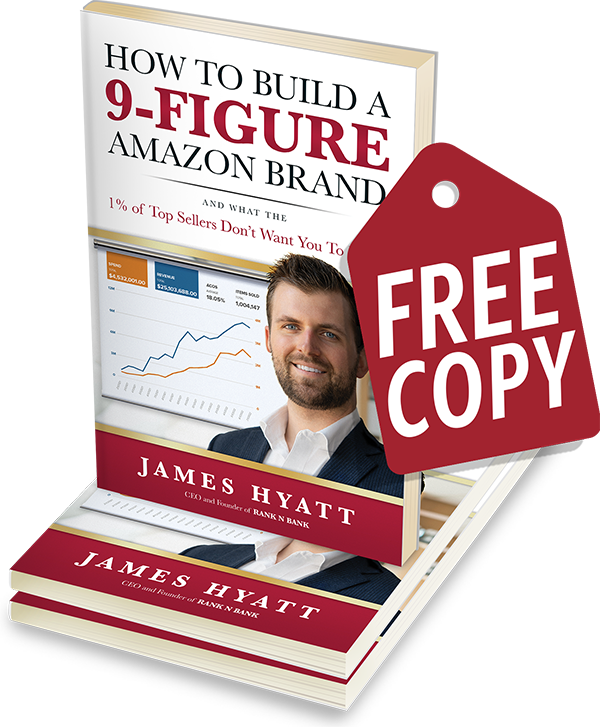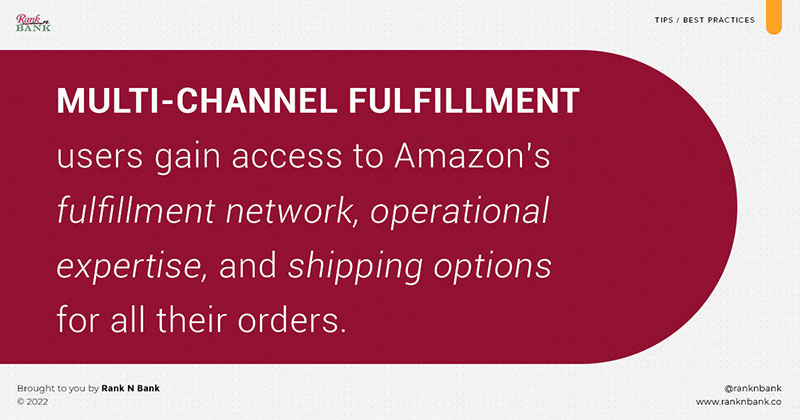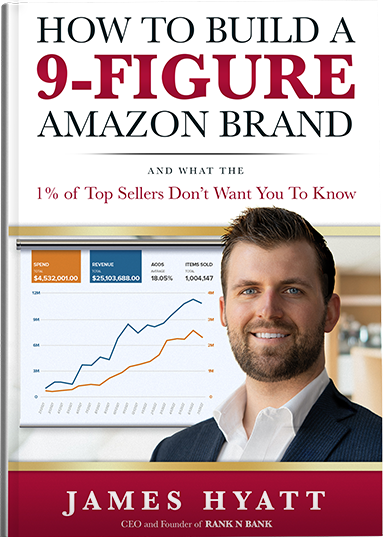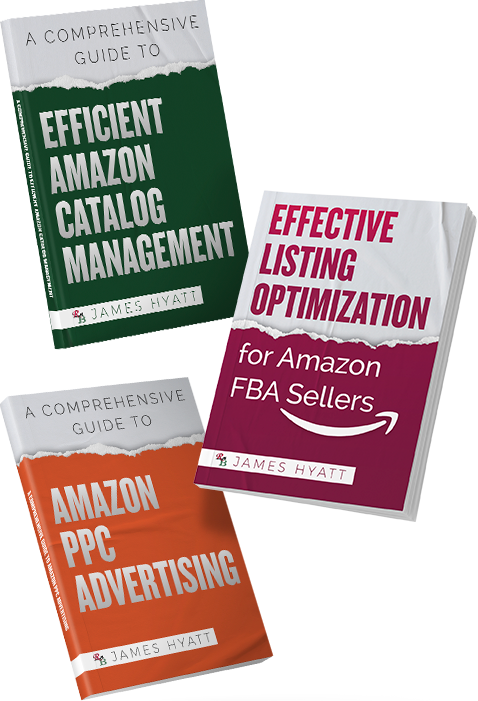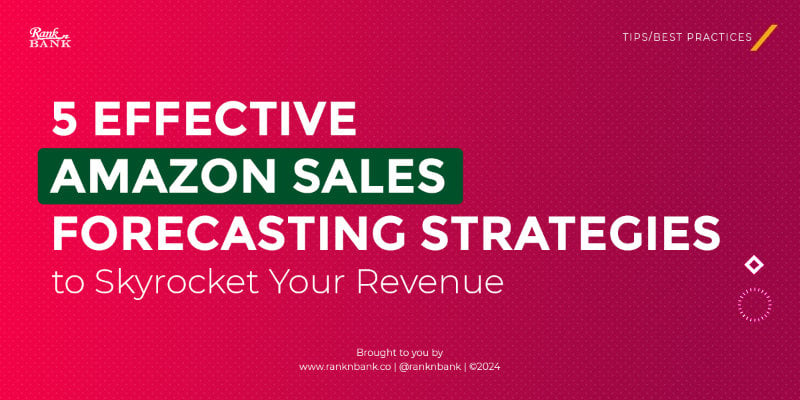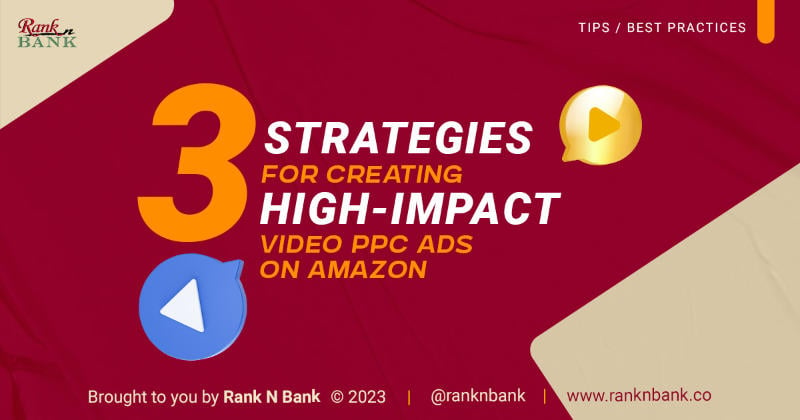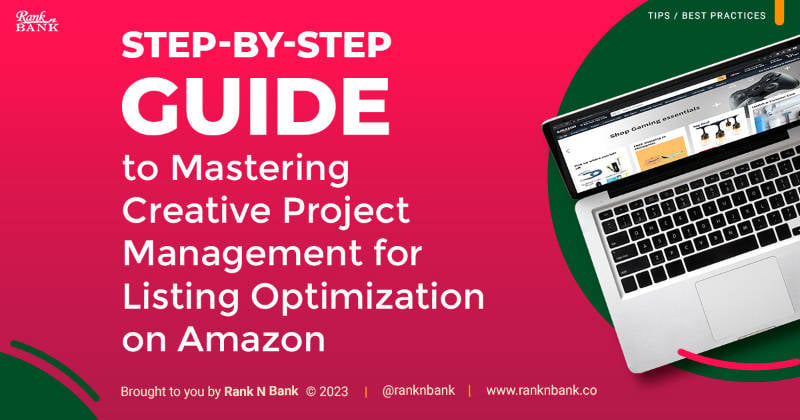What Is Amazon Multi-Channel Fulfillment?
Multi-Channel Fulfillment (MCF) is a service that uses Amazon’s warehouses to store products and fulfill orders for both Amazon’s website and a brand’s website. It is a subset of the Fulfillment by Amazon (FBA) service. Multi-Channel Fulfillment works similarly to how fulfillment with a third-party logistics company works – essentially, you store your products at Amazon’s warehouses, and they will handle the order fulfillment.
Who Qualifies for Multi-Channel Fulfillment?
Anyone already using Fulfillment by Amazon can take advantage of Multi-Channel Fulfillment. For additional fees, Amazon is happy to fulfill your customers’ orders through any of the other supported channels you sell from.
You can also use Multi-Channel Fulfillment even if you don’t yet have any inventory set up with Amazon (bearing in mind a seller account is still required to begin). You’d then need to actually list your products; however, you can specify a “start selling” date that’s far enough in advance that Amazon won’t immediately list the products on its marketplace.
How to Use Multi-Channel Fulfillment
Here’s how it works: a seller receives customers’ orders and shipping information, then passes it on to Amazon, who packs and ships the order.
Sellers can navigate to the “Manage FBA Inventory” button in their Seller Central account, pick the products to be fulfilled, and select “create fulfillment order.” Following that, simply enter the customer’s details, along with the order ID number and (optionally) a note to be printed on the package. Amazon will then provide a price estimate before the order is placed. That’s it!
Sellers can also send a “flat file” of several orders at once. It’s a pretty straightforward process that can significantly streamline the shipping and fulfillment process across different platforms.
Multi-Channel Fulfillment users gain access to Amazon’s fulfillment network, operational expertise, and shipping options for all their orders, meaning they can offer customers one- and two-day shipping options. Ultimately, the speedy delivery can help gain a competitive advantage.
As with all FBA products, you need to make sure your MCF products and shipments are prepared according to Amazon’s requirements to keep your products safe while in transit.
Amazon Multi-Channel Fulfillment Pricing
Storage Fees
Amazon’s fulfillment costs for its MCF service derive from a fee-based structure with two major fees: storage fees and fulfillment fees. You must pay to store your inventory, and you’ll also pay for each order fulfilled. Unlike FBA, however, you won’t have to pay the 15% referral fee on orders that are placed on third-party websites.
Fulfillment Fees
Amazon charges sellers for every order that’s fulfilled. The fulfillment fee is based on shipping speed, weight, and the number of products in an order. MCF offers three service tiers: 3–5 business days, 2-day, and next-day.
You can preview your per-unit fees with Amazon’s fee calculator. To download the calculator template, go to Multi-Channel Fulfillment and click the “Fee Calculator” tab. You can also preview your MCF fees by integrating your website with Amazon’s preview API.
Products are also grouped as standard or oversized units. Amazon classifies an item as oversized if its weight exceeds 20 pounds, or if the length + girth is more than 130 inches. Oversized packages are, as you might expect, more expensive to ship. You can see detailed MCF fees here.
Pros and Cons of Amazon Multi-Channel Fulfillment
Before getting started with MCF, it’s important to understand the pros and cons. Using Amazon’s fulfillment network allows businesses to offer faster shipping options and, in some scenarios, reduce costs. However, there are drawbacks that lead to a few sacrifices on the seller’s behalf.
The Pros
Some of the advantages to using Amazon’s Multi-Channel Fulfillment program are:
- Centralized Inventory Amazon has the largest network of fulfillment centers in the world. Taking advantage of the MCF service means you won’t have to facilitate or manage your own warehouses, and storing your inventory in one place will save you from such associated dilemmas. Amazon will do the heavy lifting so you can focus on running and growing your business.
- Faster Shipping Amazon’s supply chain optimizations allow sellers to offer fast shipping to customers and reduce shipping costs. Amazon fulfills orders at rates of 1 business day (priority), 2 business days (expedited), or 3–5 business days (standard).
- Competitive Pricing Amazon maintains transparent and simple pricing; you only pay for storage and fulfillment. There is one fee to pick, pack, and ship. Moreover, MCF offers up to 60% discounts on multi-unit orders.
The Cons
A few downsides to Amazon’s Multi-Channel Fulfillment program are:
- Limited Support for Sales Channels Right now, Amazon only integrates with a few e-commerce websites. If you’re selling products on other e-commerce platforms like Walmart or eBay, Amazon won’t allow your products to be listed or fulfilled.
- Restrictions on Products Sold Amazon won’t allow you to sell just anything through MCF. Product categories that have restrictions include toys, games, and subscriptions. Amazon can choose not to fulfill these orders at their discretion.
- No Returns Allowed With Multi-Channel Fulfillment, you won’t be able to rely on Amazon to handle returns, and will instead have to pay the cost of handling returns yourself. This can get complicated if you don’t have your own warehouse, as customers will be returning products directly to your home.
Amazon Multi-Channel Fulfillment Integrations
Thousands of businesses save time with Multi-Channel Fulfillment. There are a number of integrations currently available to automate fulfillment, and you can also create your own integrations through Amazon’s developer-friendly APIs.
Strategies for Using Amazon Multi-Channel Fulfillment
Here are a couple of strategies you can use to maximize the advantages of MCF:
- Create an Amazon Brand Store Utilize the available content features of your products to explain why your brand does what it does, its solutions to common consumer problems, and what those solutions are. Creating a brand store will help you increase your conversion rates while positioning organically in the rankings.
- Connect Your Blog to Your Store One of the easiest ways to start generating traffic is by advertising your store to your blog and social media accounts. Create content and build a following by connecting with customers who may be interested in your product, after which you can create targeted advertising campaigns and drive more potential sales to your page.
Is Multi-Channel Fulfillment Right for You?
To determine whether or not Multi-Channel Fulfillment is a good fit for your business, ask yourself the following questions…
- Do you currently use Amazon FBA? If the answer is “yes,” then MCF could provide a convenient solution to speed up your delivery times across all of your sales channels – you’ll no longer have to split your inventory. You can get started with MCF right away, whereas hunting for another third-party logistics company could take several weeks of researching and vetting potential partners.
- How much of your sales are coming from other channels? If Amazon accounts for 90% of your sales, then it may make sense to simply expand your FBA coverage to include your secondary channels. Remember, however, that if your next most valuable channels are unsupported (Walmart, eBay, etc.), it likely wouldn’t make sense to have MCF as your primary fulfillment method.
- How fast can you fulfill orders currently? Are you limited to the standard shipping speed of 5–7 days? Is your fulfillment rate negatively affecting your rankings? If so, MCF may be an effective way to cut down your shipping times, making 2-day delivery a standard across all of your sales channels.
Takeaway
Having consistently faster shipping speeds means better feedback from customers, which is imperative to winning the Amazon Buy Box. Opting for MCF, after evaluating all the factors, can certainly help you achieve this.
Need help in fine-tuning your e-commerce business? Let’s discuss options and strategies that are tailored to your products and brand voice. Book a call with us today!


